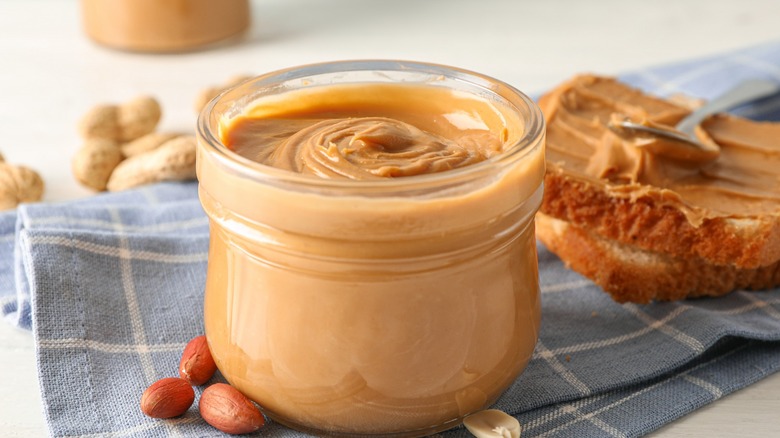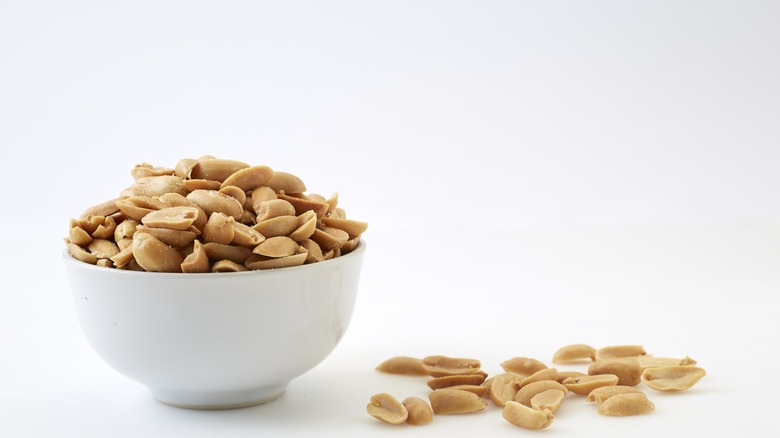For Even Better Homemade Peanut Butter, Be Sure To Roast The Nuts
Peanut butter, the humble kitchen staple, has an almost universal appeal. Its applications are only limited by one's creativity: From dollops on pancakes, dipping for apples, or the satisfying filling in classic peanut butter and jelly sandwiches. But to truly experience the best version of homemade nut butter, there's one transformative step you must begin with — roasting the peanuts.
Roasting is the secret to coaxing out the rich, toasty flavors of nuts and adds a soul-warming aroma that can't be mimicked. When peanuts are heated, their sugars caramelize, and proteins undergo a Maillard reaction — that beautiful, complex process that gives browned foods their distinct flavor. This is the bedrock of flavor upon which your homemade peanut butter will stand, and without it, you're merely scratching the surface of what your butter could be.
Moreover, roasting reduces some of the raw peanut's astringent properties, which can sometimes cause a slight bitterness, thus ensuring that every spoonful is as palatable as it is aromatic. Furthermore, when roasted, peanuts release their natural oils more readily, yielding a smoother consistency and richer mouthfeel in the final spread.
How to roast peanuts and craft the perfect spread
To roast your peanuts, spread them in a single layer on a rimmed baking sheet. Place them in a preheated oven at 350 degrees Fahrenheit, and bake for 10 to 15 minutes. You'll want to shake the tray occasionally to ensure even roasting and prevent burning. When they're golden brown and aromatic, they're done. Let the peanuts cool slightly then peel them if they're not already skinless.
Next, transfer the peeled peanuts into a food processor or high-powered blender. Pulse the peanuts until a paste begins to form. This can take several minutes; the peanuts will go from crumbly to grainy and finally to a smooth consistency. Patience is key here as it may seem like the desired smoothness won't happen, but it will. Scraping down the sides of the bowl periodically is necessary to ensure an even blend.
If you prefer a creamier peanut butter, now is the time to introduce additional ingredients. A little peanut oil or another neutral oil can help achieve a smoother texture. For a touch of sweetness, a drizzle of honey or a sprinkle of sugar can be added. Salt is optional, depending on your taste preference, but a pinch can help to elevate the nutty flavors. Once the peanut butter has reached the desired consistency, transfer it to an airtight container. Enjoy your delicious homemade peanut butter spread.

